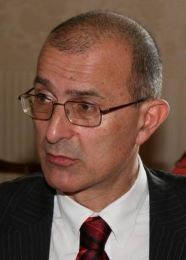 Prof. Veljko Milutinovic
Prof. Veljko Milutinovic
Fellow of the IEEE and of the Academy of Europe, Indiana University, Bloomington, IND, USA, Adjunct Professor, University of Belgrade, SRB, EUR, Visiting Professor
Prof. Veljko Milutinovic (1951) received his PhD from the University of Belgrade in Serbia, spent about a decade on various faculty positions in the USA (mostly at Purdue University and more recently at the University of Indiana in Bloomington), and was a co-designer of the DARPAs pioneering GaAs RISC microprocessor on 200MHz (about a decade before the first commercial effort on that same speed) and was a co-designer also of the related GaAs Systolic Array (with 4096 GaAs microprocessors). Later, for almost three decades, he taught and conducted research at the University of Belgrade in Serbia, for departments of EE, MATH, BA, and PHYS/CHEM. His research is mostly in datamining algorithms and dataflow computing, with the emphasis on mapping of data analytics algorithms onto fast energy efficient architectures. Most of his research was done in cooperation with industry (Intel, Fairchild, Honeywell, Maxeler, HP, IBM, NCR, RCA, etc... ). For 10 of his books, forewords were written by 10 different Nobel Laureates with whom he cooperated on his past industry sponsored projects. He published 40 books (mostly in the USA), he has over 100 papers in SCI journals (mostly in IEEE and ACM journals), and he presented invited talks at over 400 destinations worldwide. He has well over 1000 Thomson-Reuters WoS citations, well over 1000 Elsevier SCOPUS citations, and about 4000 Google Scholar citations. His Google Scholar h index is equal to 36. He is a Life Fellow of the IEEE since 2003 and a Member of The Academy of Europe since 2011. He is a member of the Serbian National Academy of Engineering and a Foreign Member of the Montenegro National Academy of Sciences and Arts.